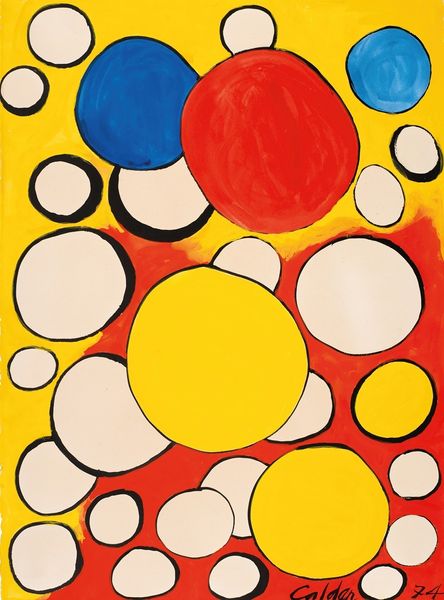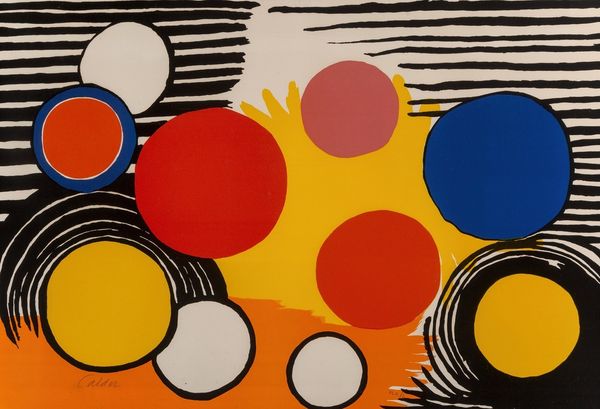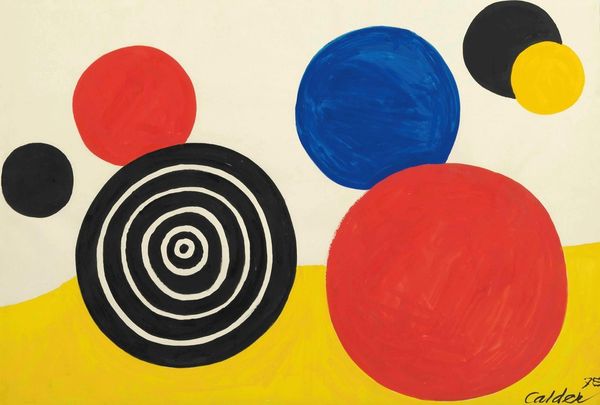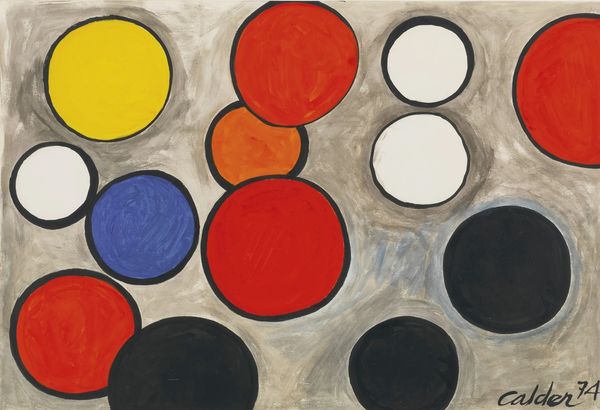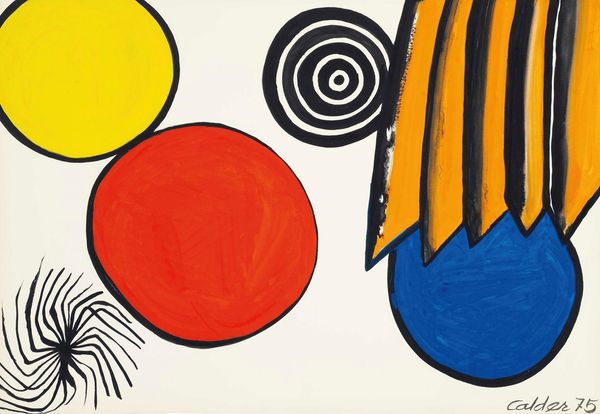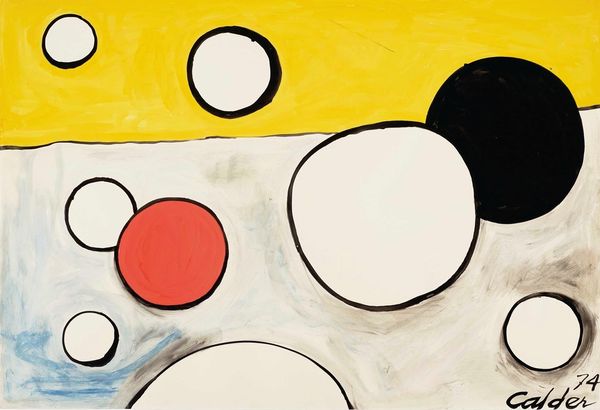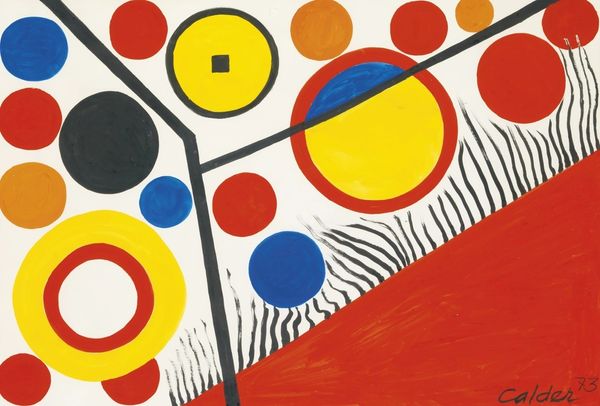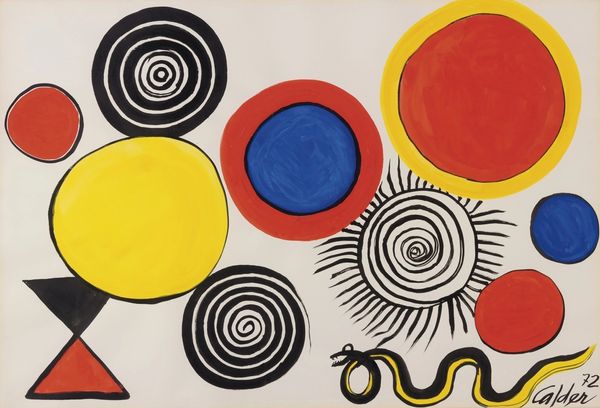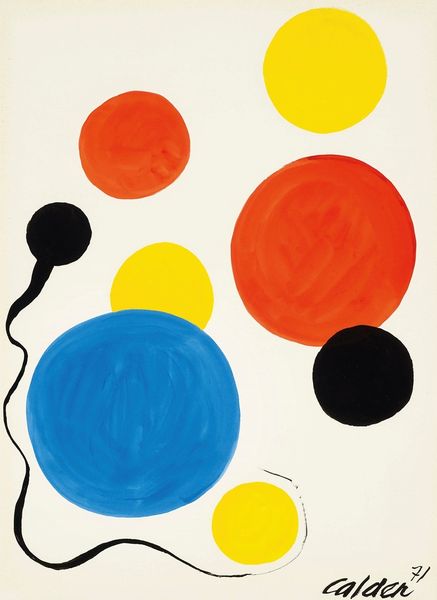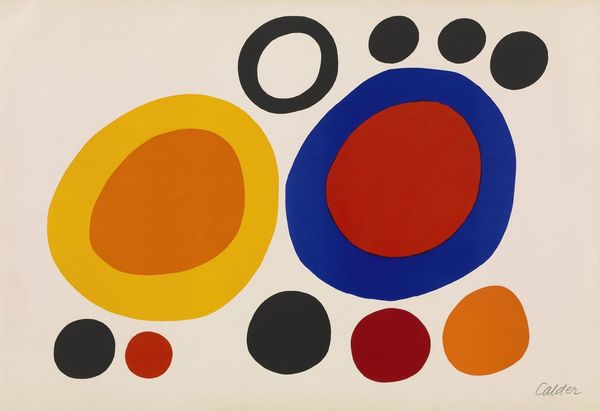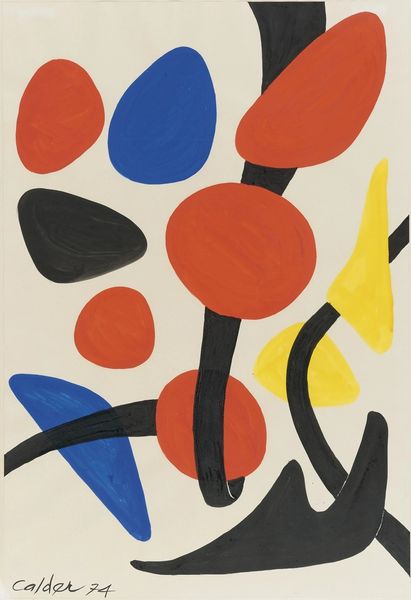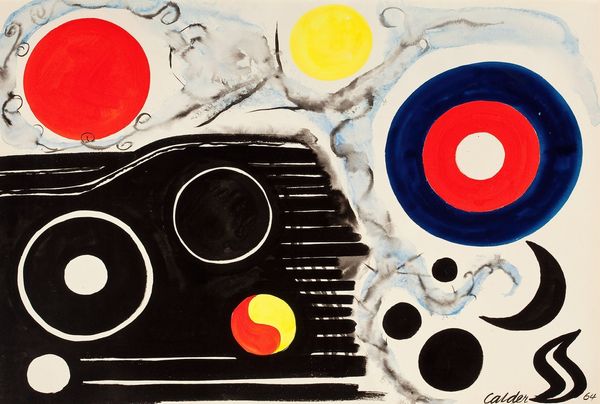
Copyright: Modern Artists: Artvee
Editor: So, here we have Alexander Calder's "Discs on Stripes" from 1972, an acrylic painting. It feels really playful, almost like a child's drawing, but the colours are so bold. What do you make of this artwork? Curator: It vibrates, doesn't it? The discs, primarily in primary colours, create an almost universal language – one accessible and engaging, linking to archetypal forms. Notice how Calder subverts the rigidity of the hard-edged stripes with these buoyant, organic shapes. It makes you wonder, what do circles signify to us? Editor: Hmmm, totality, maybe? Or perfection? The circles almost seem to float above the stripes. Is that intentional? Curator: Indeed. Consider how circles have been used across cultures: mandalas, halos, even simple family gatherings. These are unifying symbols. Calder, primarily known for his mobiles, may be capturing that same sense of motion and interconnectedness on a flat surface. What feeling do you get from the painting's colour combinations? Editor: It is dynamic but also balanced, like a playground. It feels positive and evokes a sense of visual balance. Curator: Absolutely! And what do you think these elements reflect about the culture and context in which it was created? Editor: Now I’m seeing more playfulness, more levity in this piece. It reflects, to me, an innocence…perhaps a reaction against more formal, serious art of the past? Curator: An insightful observation! The genius lies in its ability to project such basic, primal symbols. Something universally appealing, that feels joyful, immediate and somehow familiar, right? Editor: It really is interesting how something so simple can evoke so many meanings!
Comments
No comments
Be the first to comment and join the conversation on the ultimate creative platform.
